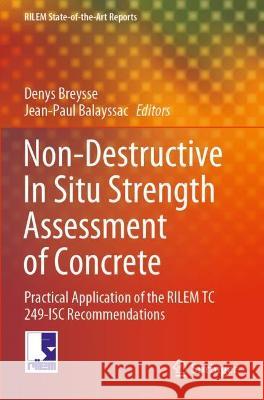Non-Destructive in Situ Strength Assessment of Concrete: Practical Application of the Rilem Tc 249-Isc Recommendations » książka
topmenu
Non-Destructive in Situ Strength Assessment of Concrete: Practical Application of the Rilem Tc 249-Isc Recommendations
ISBN-13: 9783030649029 / Angielski / Miękka / 2022
Non-Destructive in Situ Strength Assessment of Concrete: Practical Application of the Rilem Tc 249-Isc Recommendations
ISBN-13: 9783030649029 / Angielski / Miękka / 2022
cena 403,47
(netto: 384,26 VAT: 5%)
Najniższa cena z 30 dni: 385,52
(netto: 384,26 VAT: 5%)
Najniższa cena z 30 dni: 385,52
Termin realizacji zamówienia:
ok. 22 dni roboczych
Bez gwarancji dostawy przed świętami
ok. 22 dni roboczych
Bez gwarancji dostawy przed świętami
Darmowa dostawa!
The book presents the work of the RILEM Technical Committee 249-ISC. Addressing the effective application of new recommendations for non-destructive in situ strength assessment of concrete, it provides information about the different steps of the investigation and processing of test results, until the delivery of strength estimates, and includes tables giving the minimum required number of cores in a variety of situations as well as several examples of how the recommendations can be used in practice. The book explores a topic which is of major importance, i.e. the assessment of concrete compressive strength in existing structures. This property (both mean and standard deviation) is a key input in many cases, such as the reinforcement of structures, the safety checking, the extension of service life.As the new RILEM recommendations imply a deep revision (and improvement) of field practice, the book is intended for managers of structures, structural engineers and specialists of NDT that have to answer these issues. More widely, it will benefit engineers and students who are interested in NDT and in the safety analysis of structures.











